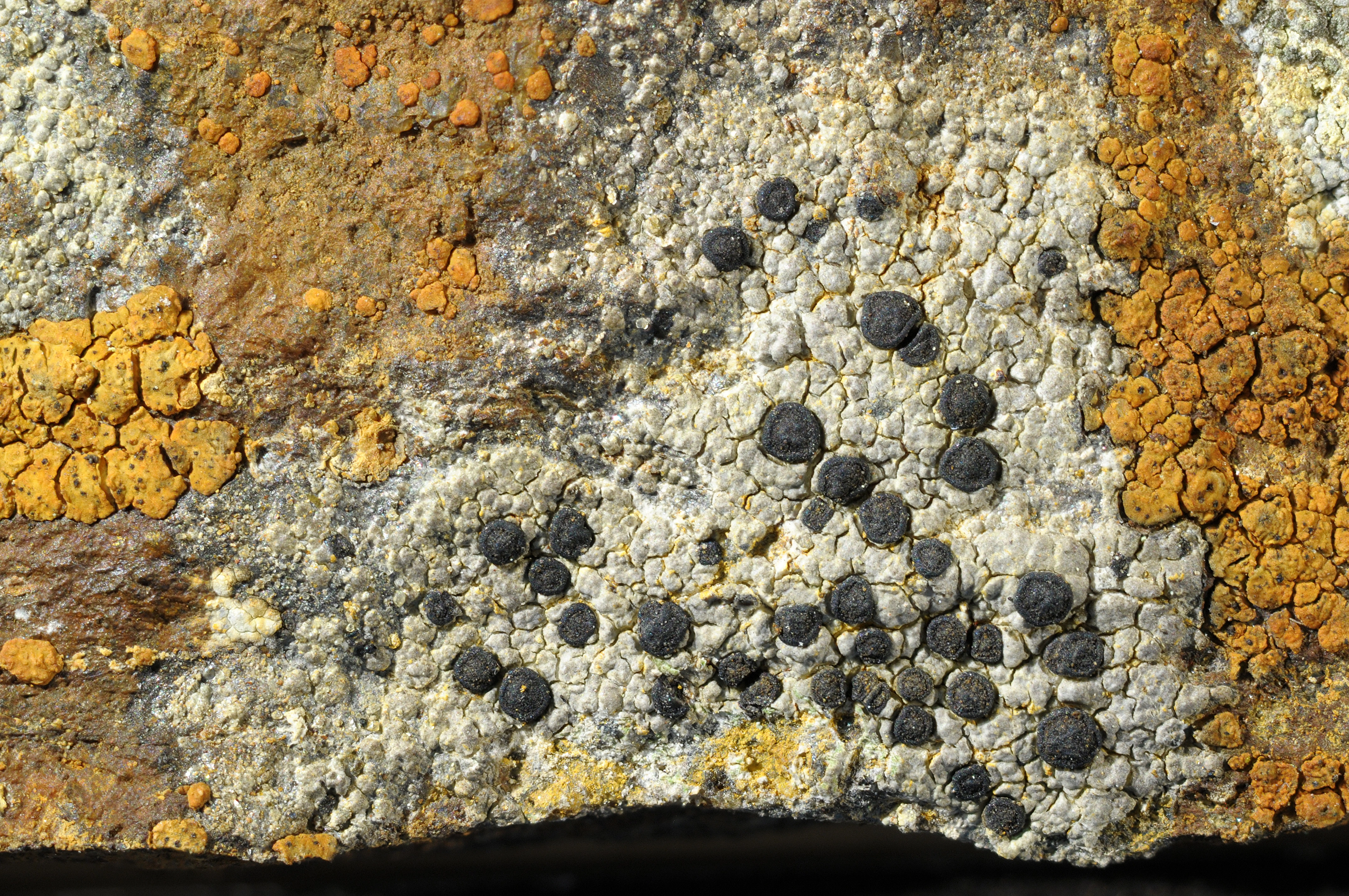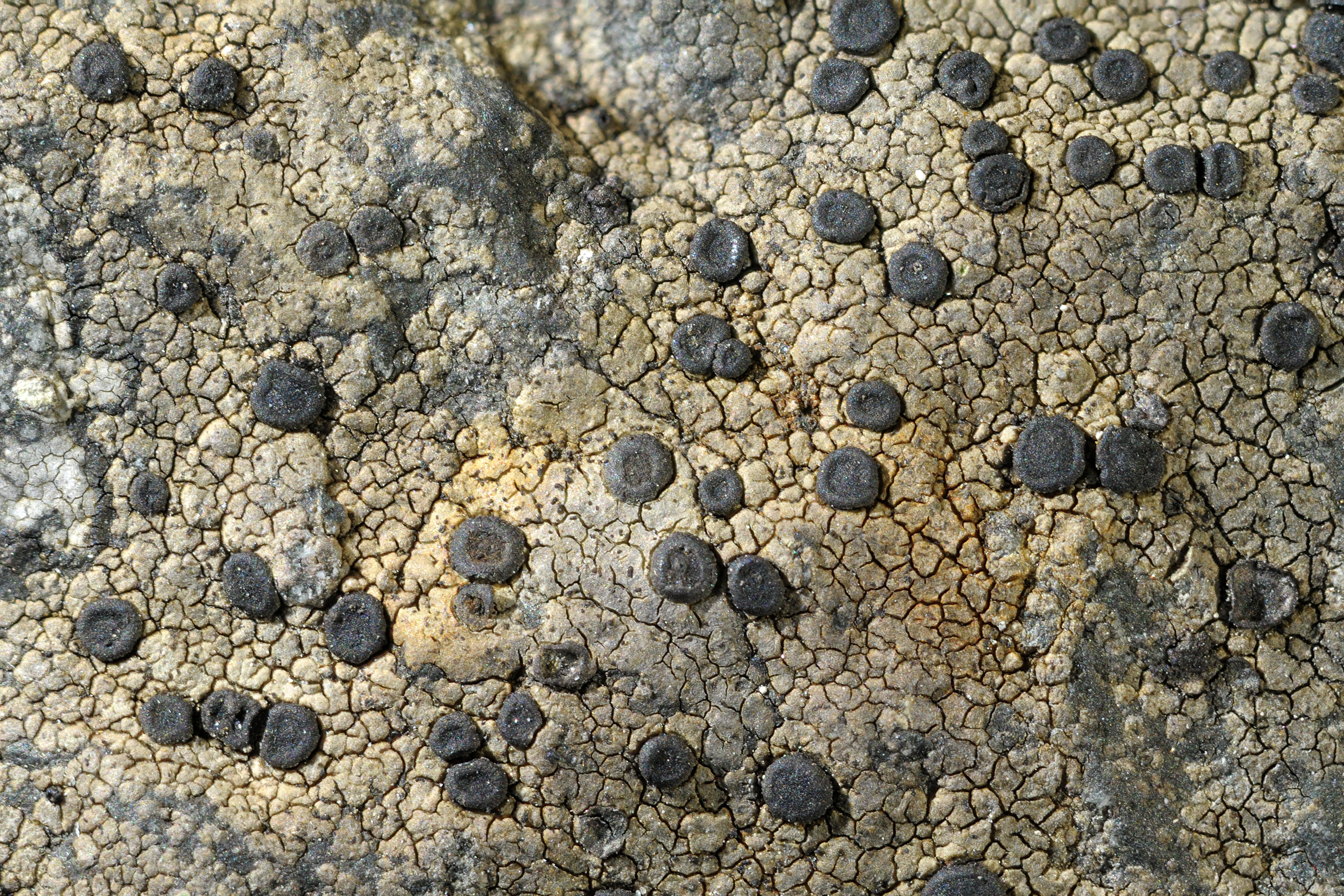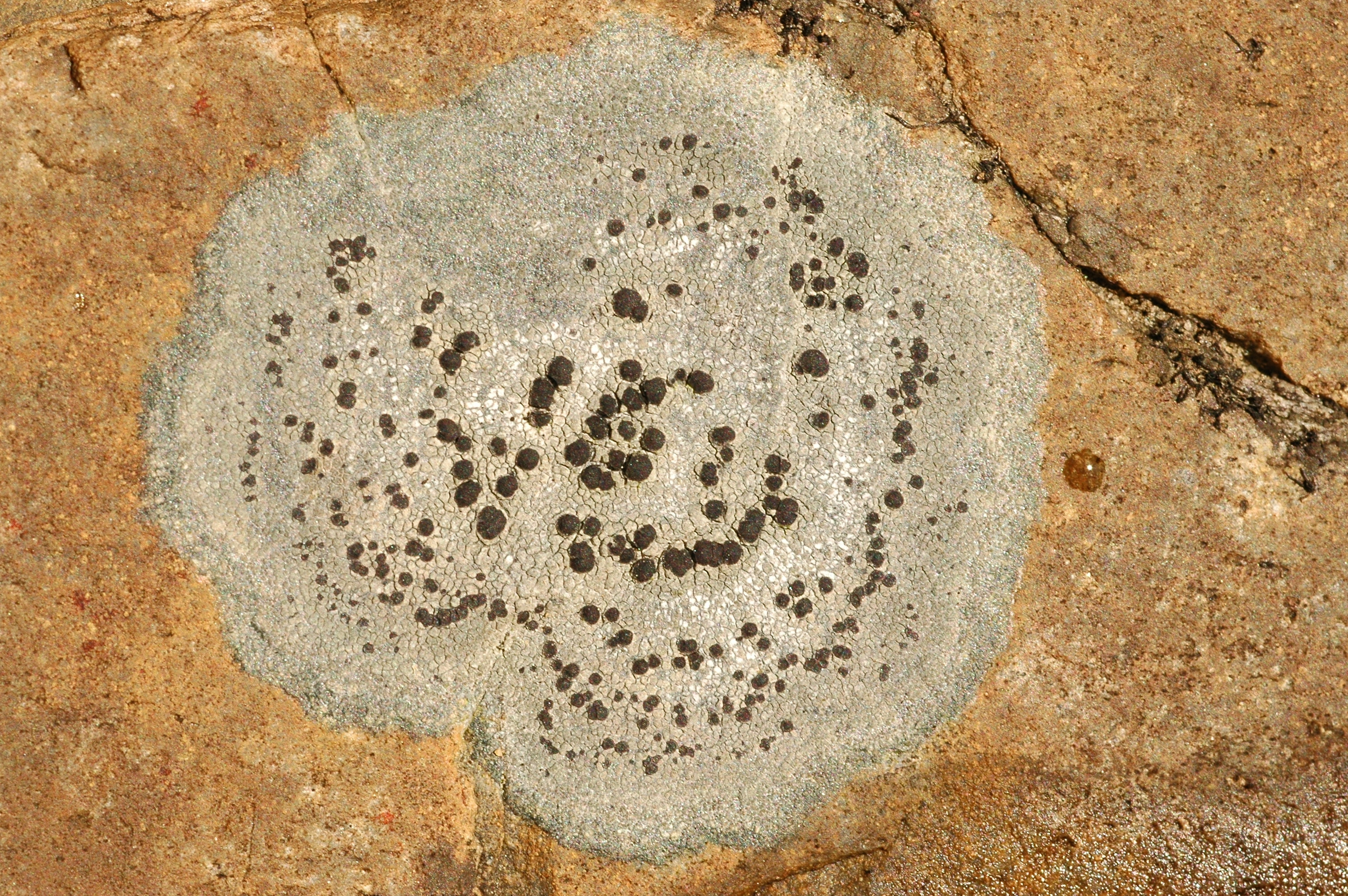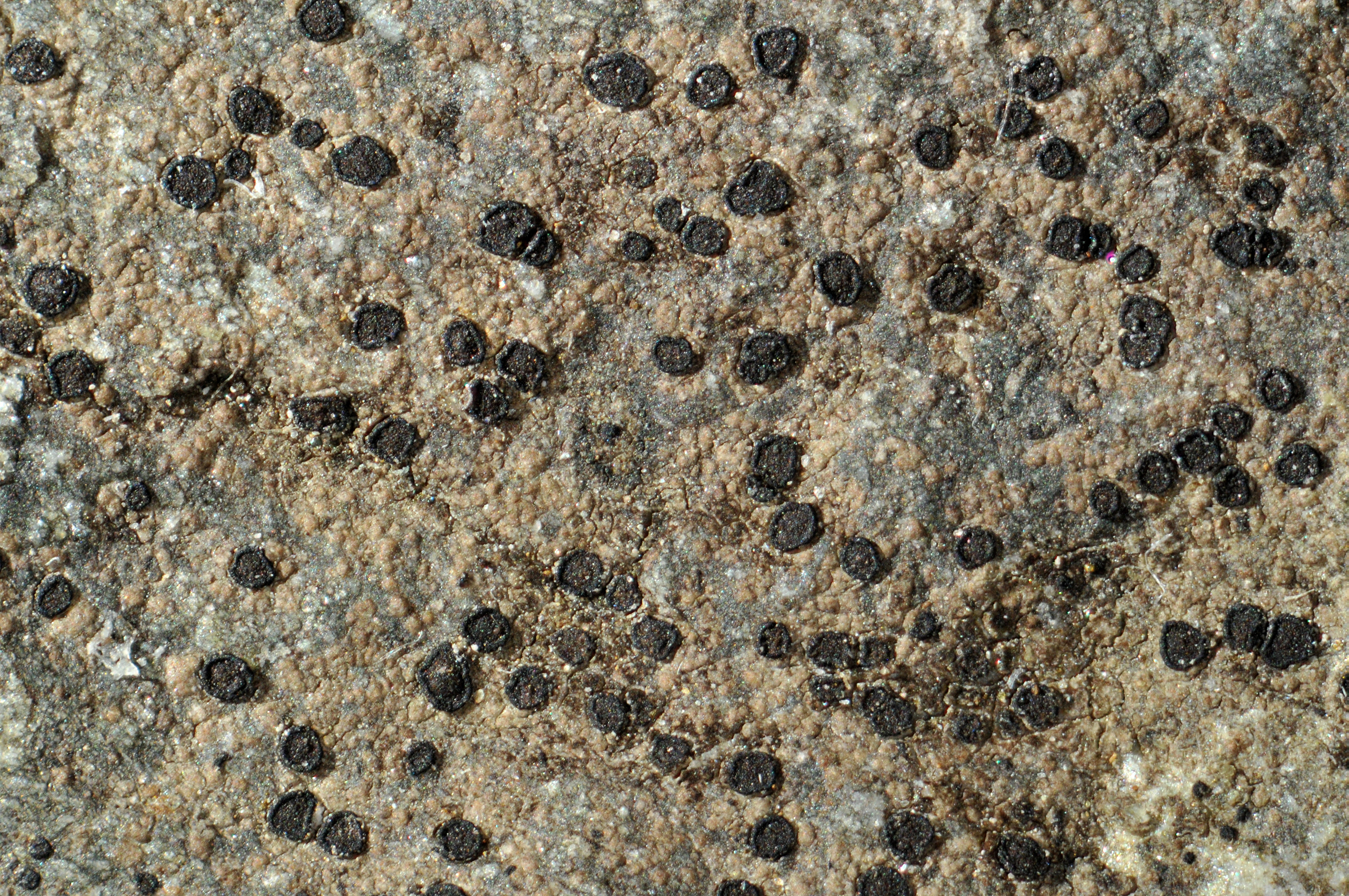Rhizocarpon reductum
- Innhold
- Morphology
- Chemistry
- Habitat
- Comment
- Look-alikes
Morphology
Thallus rimose to areolate, up to 10 cm diam.; hypothallus usually distinct, black; areolae up to 0.5 (–1) mm diam., medium grey to dark brown, dull, angular to more or less orbicular, plane to weakly convex; medulla KI–. – Apothecia up to 1 mm diam., black, epruinose, orbicular, weakly concave to weakly convex, with a thick and persistent margin and an often umbonate disc; excipulum brownish black in the rim, inner part somewhat paler brown, K–; hypothecium reddish brown, K–; hymenium colourless; epihymenium olivaceous green or olivaceous brown, K–; no crystals or granules in the apothecia; ascospores 8 per ascus, eumuriform, persistently colourless or becoming faintly brown with age, 20–32 × 9–15 µm. – Conidiomata not seen.
Chemistry
No lichen substances or stictic acid; spot tests: medulla and exciple PD– or PD+ orange, K– or K+ yellow, C–.
Habitat
On siliceous rock. Common, especially in the lowlands.
Comment
The species is similar to R. lavatum and some specimens may be difficult to identify. The description given above is based on typical specimens and may not cover the whole variation range of the species, e.g. it is not clear if specimens containing stictic acid should be included in this species.



